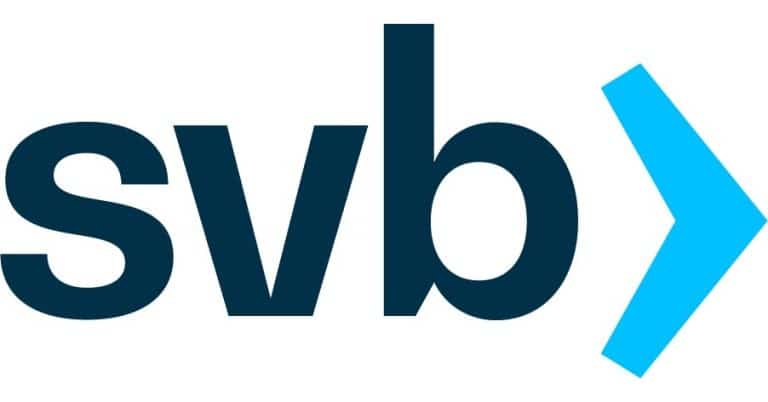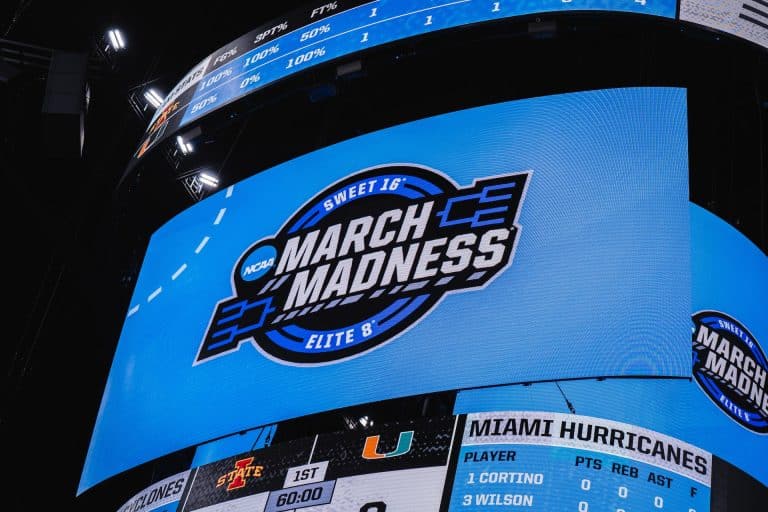With the recent bank crisis, you have heard the term contagion a great deal. The Contagion being referenced, refers to the spread of an economic or financial crisis from one market or region to others, leading to a domino effect and causing widespread disruptions in the economy. It can occur in many forms, including the transmission of financial instability, economic shocks, or systemic risks from one country or sector to another. While this is definitely a known occurrence there is a different kind of contagion going on right now. That is the contagion of stocks that are grouped together in a thematic ETF in this case bank stocks, that are being indiscriminately sold because an ETF may have exposure to one bank for example Silicon Valley Bank.
What is an ETF
An ETF (Exchange-Traded Fund) is a type of investment fund that trades on a stock exchange like a stock. An ETF holds a basket of underlying assets such as stocks, bonds, commodities, or currencies, and aims to track the performance of a particular index, sector, or asset class. ETFs can be bought and sold throughout the trading day at market-determined prices, making them highly liquid and flexible.
ETFs offer several benefits to investors. They provide instant diversification by investing in a broad range of assets, reducing the risk associated with investing in a single stock. ETFs typically have lower expense ratios than actively managed mutual funds, making them a cost-effective option for investors seeking to track a particular market or index. Additionally, ETFs can be traded like stocks, allowing investors to buy and sell them throughout the trading day at market-determined prices.
What is the ETF Creation/Redemption Process
The creation and redemption process of an ETF (Exchange-Traded Fund) is the mechanism by which new shares of the fund are created or existing shares are redeemed. This process allows the ETF to maintain its target investment objective and keep its share price in line with the underlying assets it tracks.
The creation process involves an authorized participant (AP), typically a large institutional investor, working with the ETF issuer to assemble a basket of securities that closely matches the ETF’s underlying index. The AP then delivers this basket of securities to the ETF issuer in exchange for newly created ETF shares. These shares can then be sold on the secondary market to individual investors.
The redemption process is the opposite. An AP returns a basket of ETF shares to the issuer in exchange for the underlying securities. This process is used when an AP wants to exit its position in the ETF or when the ETF issuer needs to reduce the size of the fund.
Now, the creation and redemption process can lead to indiscriminate selling because APs may need to acquire or dispose of large blocks of securities to create or redeem ETF shares. This can have a significant impact on the price of those securities, especially if they are relatively illiquid.
For example, if an AP needs to acquire a large block of shares in a particular stock to create ETF shares, it may bid up the price of that stock, potentially causing it to become overvalued. Conversely, if an AP needs to sell a large block of shares to redeem ETF shares, it may drive down the price of that stock, potentially causing it to become undervalued.
In extreme cases, this can lead to a feedback loop where the creation and redemption process itself causes the underlying securities to deviate significantly from their intrinsic value. This can create opportunities for arbitrageurs to profit by buying or selling the underlying securities when their price deviates too far from their true value.
ETF Redemptions have hurt Bank Stocks
The SPY (SPDR S&P 500 ETF) is an exchange-traded fund that seeks to track the performance of the S&P 500 Index, which is a market-cap weighted index of 500 large-cap U.S. companies. While not a bank specific ETF this fund is so massive it can send shockwaves. Over the last month it has seen Redemptions of 10 Billion. When Silicon Valley Bank was trading, this fund held the most shares of the bank with 621K shares.
The XLF is an exchange-traded fund (ETF) that seeks to track the performance of the financial sector of the S&P 500 Index. The XLF is managed by State Street Global Advisors and holds a portfolio of stocks in the financial industry, including banks, insurance companies, real estate firms, and other financial services companies. Over the past month this fund has seen 1.5 Billion in Redemptions.
Some of the Top Holdings of the XLF The chart below shows that these companies are all down on the month anywhere from 5-25%. While there is some disparity in the highs and lows, the Corollary ETF Effect is at work here, and most are trading in symmetry.
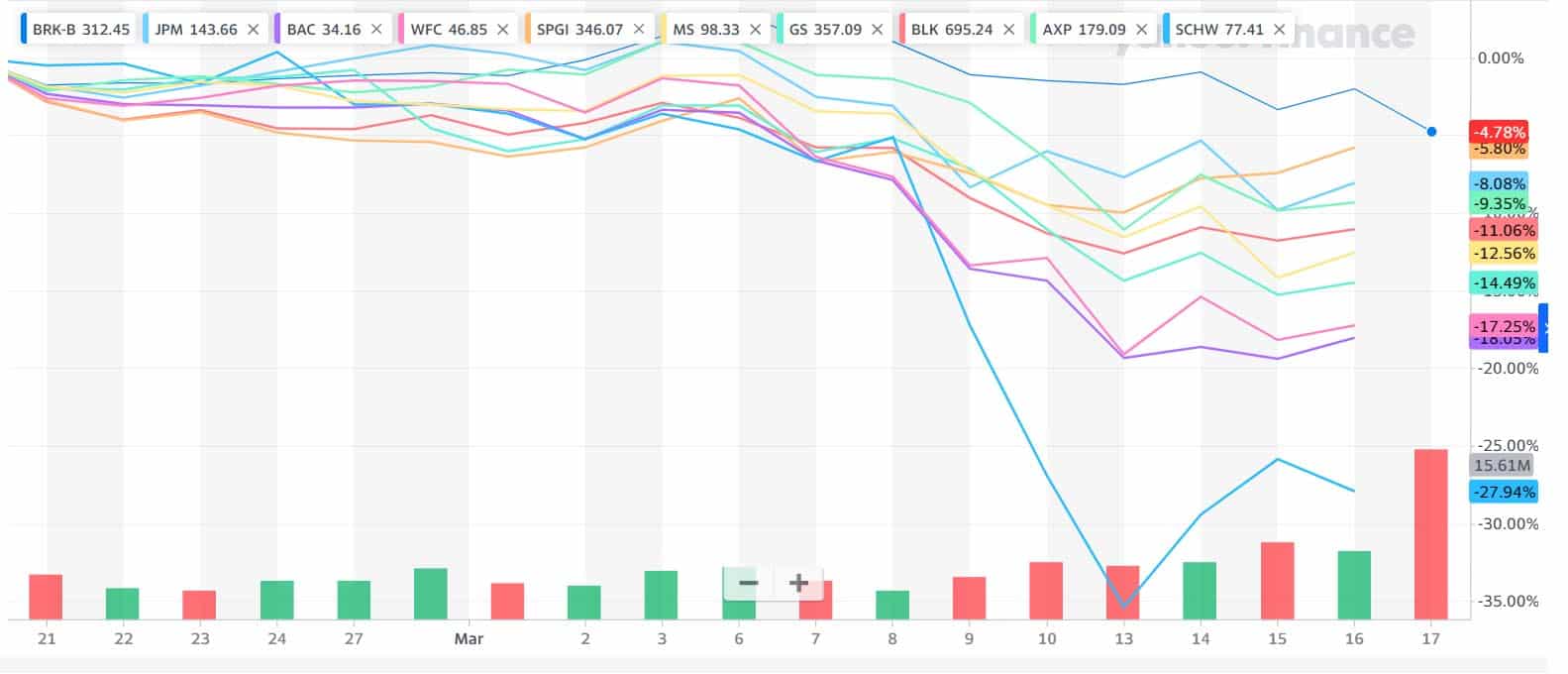 Berkshire Hathaway Inc Class B
Berkshire Hathaway Inc Class B
JPMorgan Chase & Co
Bank of America Corp
Wells Fargo & Co
S&P Global Inc
Morgan Stanley
The Goldman Sachs Group Inc
BlackRock Inc
American Express Co
Charles Schwab Corp
Catching a falling Knife or this run is Overdone
The KRE is an exchange-traded fund (ETF) that seeks to track the performance of the S&P Regional Banks Select Industry Index. The fund is managed by State Street Global Advisors and holds a portfolio of stocks of regional banks in the United States.
On March 15 the Federal Reserve announced a new lending program, the Bank Term Funding Program. Seen as a backstop for the Banks, the program aims to stabilize the financial system by swapping bonds owned by banks for cash, which will be collateral for Fed loans of up to a year. The new program positively impacted the KRE which saw its largest single day of creations or inflows in 10 years at over 1.1 Billion. Two of the top 10 Holdings in KRE are Silicon Valley Bank and First Republic Bank. This is a short term positive for banks and a sign that investors are feeling the bank run is overdone.
ETF’s a Huge Factor on Market Moves
ETFs have become a significant driver of stock market behavior, and they can contribute to indiscriminate selling in times of market stress. When investors sell ETFs, the underlying assets must be sold to raise the cash necessary to pay off the investors, which can lead to indiscriminate selling of those assets.
Furthermore, ETFs have become increasingly popular with investors over the years, and as their popularity has grown, so has their influence on the stock market. In some cases, ETFs may account for a significant portion of trading volume in certain stocks, which can lead to increased volatility and heightened sensitivity to market movements.
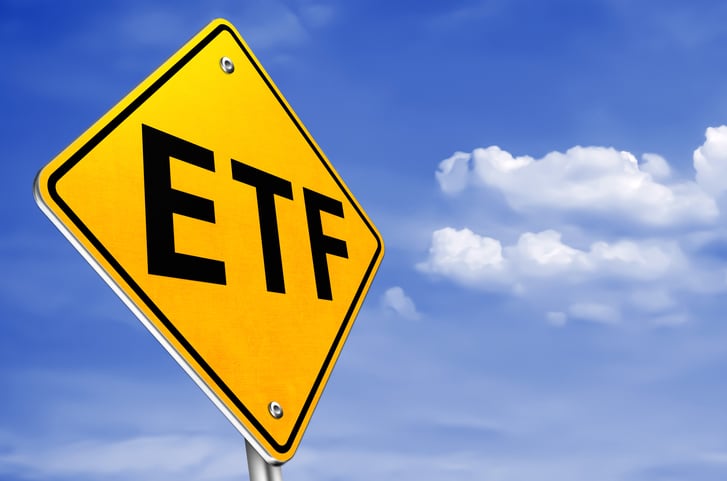
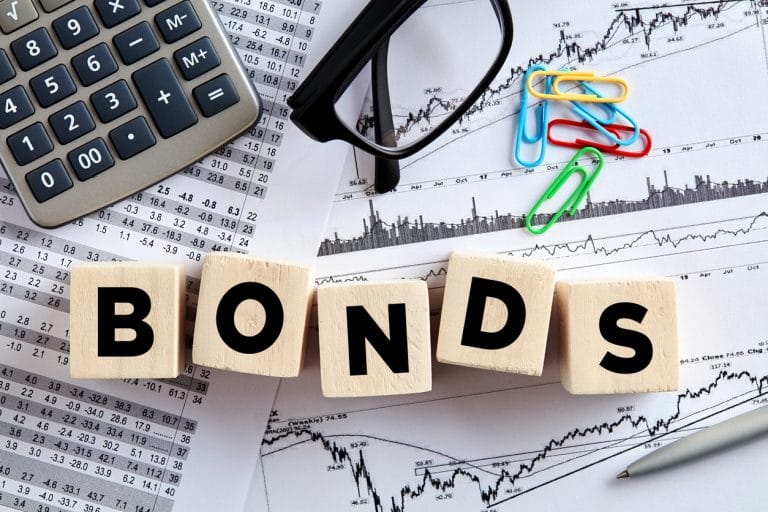

 Berkshire Hathaway Inc Class B
Berkshire Hathaway Inc Class B
